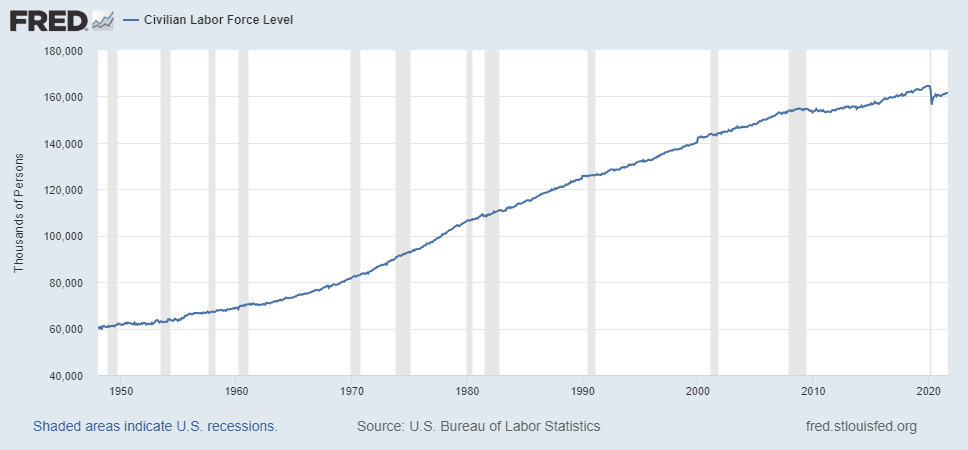I, Pencil Meets Today’s Political Realignment

Photo Credit: Getty
Conservatives are different than they were just a few years ago, and it isn’t just because of Trump, who is more a symptom than a root cause. There is a larger political realignment underway, as happens every couple of generations. Previously, conservatives saw communism as the enemy, and favored free markets as a bulwark against it. But the Cold War ended a generation ago. Today, the debate isn’t over communism vs. capitalism, it’s over open vs. closed.
The latest data point in the current political realignment comes from The American Conservative’s Declan Leary, in a piece taking on Leonard Read’s classic free-market pamphlet I, Pencil (see also CEI’s video adaptation). Leary’s article is titled “We Are Not Pencils,” though the article’s URL contains the phrase “pencils are from the devil.”
This is quite a change from the days when President Ronald Reagan was photographed reading The Freeman, the magazine published by I, Pencil author Leonard Read’s Foundation for Economic Education.
At the same time, the old and new conservatives aren’t as different as they seem, despite their differences on trade, free markets, antitrust, industrial policy, and Eastern European dictators. Their different views come from the same inborn human tendency to see the world in terms of in-groups and out-groups.
Those groups can be defined by almost anything, whether serious or silly—language, race, religion, nationality, political party, sports fandom, views on whether pineapple belongs on pizza, and more. People can simultaneously belong to several of these groups, and flit between them seamlessly as social situations dictate. A Democrat and a Republican can be friends at a baseball game where they cheer for the same team, for example, then go back to bickering after the game.
I, Pencil celebrates openness, giving that 1958 pamphlet a clear position in today’s realignment. Read’s point is that cooperation is so fundamental to the human condition that no one, by themselves, can make something as simple as an ordinary pencil. Interconnectedness makes modernity possible.
Making a pencil requires millions of people working in concert. These include loggers, miners, tool makers, paint producers, truck drivers, box makers, machinery designers, farmers and restaurant workers to feed them all, retail clerks, and more. Not only that, but nobody is in charge. Nobody is following any plan. This complicated order emerges spontaneously, guided by little more than the price system and social norms.
But where Read sees a source of wonder, Leary sees a source of fragility. “The Invisible Hand wrenched away not just American jobs but America’s very capacity to produce things,” he writes. What if a link in the supply chain breaks? What if China decides to cut off America’s supply of rare earth elements? What if some politically woke truck drivers go on strike?
It would be better, Leary argues, to turn inwards a little bit. Going full Juche, as North Korea calls its philosophy of self-reliance, is obviously harmful. But on the spectrum from open to closed, Leary argues that we have gone a bit too far toward the open side, and become too vulnerable because of that. Out-groups aren’t as trustworthy as the in-group, in that view.
But has the invisible hand really “wrenched away American jobs?” Look at the data for the size of the U.S. labor force, going back to 1948:

Labor force size is tied most closely to population size, not how open the American economy is to foreign trade. In 2000, the labor force was 143 million people. As of September 2021, it was 161 million. That’s a net gain of 18 million jobs, even accounting for the 3 million jobs lost during the pandemic that have not yet come back.
Leary is asking the wrong question. What is important is not how many jobs, but what types of jobs there are, and how much value those workers create. A subsistence farming economy has full employment, but low living standards. A globalized, high-tech economy also often has full employment, but its similarly sized labor force has much higher living standards and longer life expectancies.
So Leary’s argument about jobs doesn’t hold. What about “America’s very capacity to produce things?” Let’s look at the St. Louis Fed’s total index for industrial production from 1920 to the present. Notice that it is near an all-time record high right now, despite a COVID-related dip:

So Leary’s argument doesn’t hold there, either. To be fair, this record was set by fewer manufacturing workers. There were 12.8 million manufacturing workers when COVID hit, compared to a peak of 19.5 million workers in May 1979. That is concerning. But why is manufacturing output still higher? Because today’s workers are more productive than they were a generation ago.

This productivity surge—driven by technology, openness, and specialization—has freed up millions of people’s time and talent for other pursuits. Not only do Americans manufacture more stuff than ever before, we are also creating more service-related value, with less effort. It’s not manufacturing or services when productivity increases; it’s manufacturing and services. The pie gets bigger.
The key to mass prosperity is doing more with less. Politically directed industrial policy attempts to treat a healthy patient, while harming the rest of the economy by taking away its resources.
Moreover, the service jobs to which workers are migrating tend to pay better and have better working conditions. There is something to be said about working in an air-conditioned office or from home, rather than a noisy factory floor with potentially dangerous machinery.
Average hourly pay, as of September 2021, is $24.18 in manufacturing, versus $30.85 for the economy at large. Since wages are tied to productivity in the long run, a major reason for workers’ migration away from manufacturing is that the new types of jobs tend to create more value than the old ones.
Using government policy to migrate workers back to manufacturing jobs would mean paying many of them less. It would also mean that their hard work would create less value for people. That would be a double blow to worker’s egos, which is almost certainly not Leary’s intention. But as the economist Thomas Sowell likes to say, intentions are not results.
What about the theoretical case for more economic self-sufficiency? The first response is a simple one: Don’t put all your eggs in one basket.
Leary argues that elaborate supply chains are vulnerable. If one link breaks, the whole chain becomes useless. Fortunately, supply chains are nothing like chains. A link in a chain is connected only to the link directly ahead of it, and the one directly behind it. Real-world supply chains are more like webs or networks, where each piece is connected to nearly every other piece. That is a source of strength.
Breakages happen all the time in the real world. It’s important to have as many ways as possible to adapt and reroute. As the economist Israel Kirzner pointed out, entrepreneurship is all about alertness. Markets and supply networks are never perfect, and are always changing. Every flaw, and every vulnerability, is an opportunity for improvement. The economy is an ongoing process of experiment, trial, error, and adaptation.
But people will have fewer ways to make improvements and shore up against vulnerabilities if policies limit who they can cooperate with or confine their talents to certain industries. Industrial policy and self-sufficiency make people more vulnerable against threats because they lock people into old patterns, distort prices that convey important information, and make it more difficult to adapt. This is true whether the threat is a global pandemic, a foreign adversary, or a local labor dispute.
The economic case for why openness is more resilient than self-reliance is not new. It is not even controversial, at least among economists. But in politics, issues are often not about the merits. If Leary really is arguing against the economics, he has not succeeded. But if he’s staking out a cultural or political identity and attacking out-groups, then mission accomplished.
Leary also deserves credit for using the word “liberal” closer to its original and correct meaning—valuing freedom and openness—than do most commentators.
The insight that national conservatives and populists often care more about cultural identity than policy is key to understanding today’s political realignment. That is not to pick on conservatives; many progressives are no different. For them, too, signaling is often more important than real-world policy effects.
Affirming the in-group and vilifying the out-group is harmless at a ballgame, or in an argument about whether Star Wars or Star Trek is better. But in public policy, the stakes are higher. An old impulse that had survival benefits in hunter-gatherer times can have the opposite effect in the modern world—especially when COVID-19 is still a going concern.
It isn’t often that a pamphlet about basic economics offers insights about a political realignment that happens 60 years after its publication. But that is the case with I, Pencil. Leary would not have bothered writing about Leonard Read’s defense of openness if it didn’t strike a nerve. Fortunately for the economy and for our ability to respond to the COVID crisis, Leary’s criticisms do not hold up against real-world data or economic theory. If he instead wants to engage in culture war identity signaling, perhaps he should find ways to channel that impulse in ways that would not make America more vulnerable to threats both domestic and foreign.
For more on “I, Pencil,” see CEI’s video adaptation. See also my review of CEI Julian Simon Award winner Johan Norberg’s book Open.